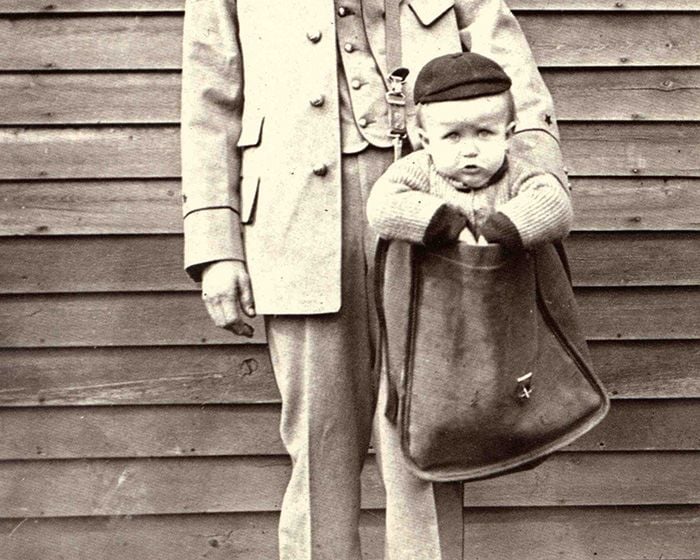
To listen to today’s reflection as a podcast, click here
The US Post Office officially launched its Parcel Post service on January 1, 1913.
All of a sudden, citizens could mail larger and heavier items than just love letters and Christmas cards.
A few imaginative folks immediately realized they had a brand new way to send bricks, books, or a dozen eggs to destinations across town or to the other side of the county.
Then there was the Ohio couple named Jesse and Mathilda Beagle. They were hoping their eight-month-old son James could visit his grandmother, who lived a few miles away in Batavia. So they mailed him. His “delivery” cost Mom and Dad just 15 cents, and he arrived safe and sound.
In February 1914, a four-year-old girl named Charlotte May Pierstoff was mailed from her home in Grangeville, Idaho, to her grandparents’ house some 73 miles away. According to Jenny Lynch, an historian for the USPS, “Postage was cheaper than a train ticket.”
Before over-protective parents everywhere go completely bananas, it should be noted that the little girl wasn’t asked to squeeze into a box or a canvas bag. She sat on a train with a second cousin who happened to work as a clerk for the railway mail service.
Then there was the Florida woman who had to cough up only 15 cents to mail her six-year-old daughter to visit her grandfather 720 miles away in Virginia.
The USPS realized it had reached the proverbial “bridge too far” when it learned of the three-year-old girl who was mailed a whopping 40 times to visit her sick mother. The Postal Powers That Be quickly declared that living human beings could no longer be stamped and delivered via Parcel Post.
It may have been a different time, but one reality shines through:
“Mail carriers were trusted servants,” says Lynch. “There are stories of rural carriers delivering babies and taking [care of the] sick. Even now, they’ll save lives because they’re sometimes the only persons that visit a remote household every day.”
Trust was also a key factor in the delivery of mail during the earliest days of Christianity.
During the first century, there was no such thing as a public postal service. Heads of state could rightfully expect their messages to be delivered securely and on time.
But everyone else had to rely on trusted couriers. That included the authors of the theological and pastoral correspondences that represent 21 of the New Testament’s 27 books.
The apostle Paul, for instance, couldn’t whip off a note to those problem people in the city of Corinth, drop it into a FedEx priority envelope, and expect that it would be “absolutely, positively” delivered overnight.
There is evidence that Paul didn’t personally apply pen to papyrus, but dictated his thoughts to an amanuensis (perhaps a trained scribe). He may have been on the road or at the home of a fellow disciple. We know that several of his letters were sent from different prisons. First century dungeons were typically nightmarish places – foul-smelling, fetid, poorly illuminated underground chambers.
Buoyed by the presence of the Holy Spirit, but admittedly burdened by daily anxiety concerning the spiritual health of his young converts, Paul recognized how long it might take for a letter to be delivered – and how many things had to go right just to receive a reply.
We know he almost always relied on trusted friends or faithful couriers to personally deliver those heartfelt messages.
We even know some of their names. Titus journeyed to Corinth (2 Corinthians 8:16-24). Epaphroditus delivered Paul’s letter to Phillippi (Philippians 2:25-30). Tychicus was the courier to Colossae and Ephesus (Colossians 4:7-9 and Ephesians 6:21-22).
There is compelling evidence that a deaconess named Phoebe personally transported Paul’s magnum opus to the church at Rome (Romans 16:1-2).
Since a courier may have been expected to answer some of the recipients’ questions, and even to offer explanations of Paul’s thoughts, it’s a very big deal indeed that the apostle chose a female to be his trusted representative.
Robert Oppenheimer, of all people, said it well: “The best way to deliver a message is to wrap it in a person.”
For God so loved the world that he didn’t send a fax or a text or utilize skywriters to assure us of his love.
Long before those parents pushed the boundaries of the USPS, God himself sent a child.
His name is Immanuel, or God With Us – the most special delivery of all time.
